The 1979–85 Cadillac Eldorado is slow, soft, and superb
This 1982 Eldorado isn’t exotic or rare. Cadillac sold 52,000 of them that year. It’s definitely not fast. The gentle float to 60 mph takes over 12 seconds. It isn’t particularly valuable, either—many enthusiasts could easily afford one. Yet there’s a lot to love in this 17-foot sofa of a car. An ambitious design when it debuted, the tenth-generation Eldorado came at a time when driving a Cadillac was a much bigger deal than it is today. In 2023, this ’82 is a curious combination of classic and modern, wrapped in a package that is glaringly of the period that produced it.
And my God, it’s comfortable. With the waterbed-like ride, seats so soft you want to melt into them, and a back seat roomy enough to nap on, this car is more relaxing than an entry-level classic car has any right to be. Spending time behind the wheel of this ’82 Biarritz coupe (which is currently up for auction on Hagerty Marketplace) was a clear reminder that nobody makes cars like this anymore. And the cost of entry for a unique driving experience can be temptingly low.
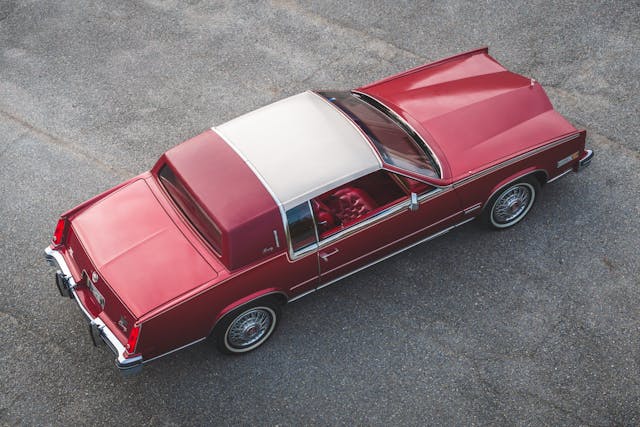
The “Eldorado” name first came about in 1952, born out of a competition held within the company to find a name for the upcoming concept car that would celebrate Cadillac’s 50th anniversary. Referring to El Dorado, the mythical lost city of gold sought by the conquistadors, the moniker stuck and made it into the 1953 lineup on Cadillac’s top-shelf, limited-production convertible. It then joined the normal production lineup for 1954, and from then on was always either at or near the top of the company’s model range. That meant huge, flashy, trend-setting cars packed to the gills with the latest in comfort and convenience features. The “Eldo” was always a car that made a statement, and that statement was: “I’ve made it!”
By the late 1970s, though, the Malaise era was near its peak. Domestic carmakers struggled to find their way while facing waves of new emissions and safety rules, an ongoing invasion of foreign competition, and consumer preferences that were shifting away from heft and toward fuel economy. Even the king of big, oversized cars—Cadillac—saw which way the winds were blowing. For the Eldorado, Cadillac’s golden boy, the big shrink came with its 1979 redesign.
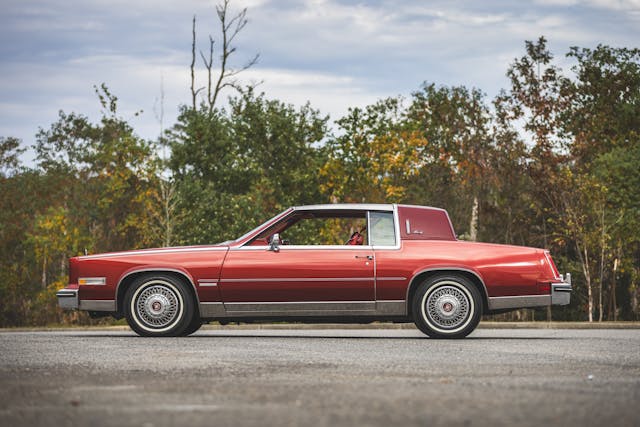
Sharing the E-body platform with its corporate cousins the Buick Riviera and Olds Toronado, the ’79 Eldorado came in at 20 inches shorter overall, borderline diminutive compared to the elephantine ’78 model. A full foot got chopped out of its wheelbase and it tipped the scales at over 1000 pounds lighter. Still, this was no compact. The ’79 model retained the look of a properly large, two-door personal luxury car, with classic long hood/short deck proportions accentuated by the upwards kick at the beginning of its rear quarter panels. A huge, traditional Cadillac grille dominated the front, and behind it sat not some frugal four-cylinder but a voluminous V-8. Speaking of volume, despite the drastic decrease in overall size, the new Eldo offered more interior and trunk space than its predecessor. “Downsizing” may have a bad connotation, but this was downsizing done right.
Along with the Buick and Oldsmobile, the ’79 Eldorado was also the first American full-size car with fully independent suspension, in this case transverse torsion bars and tubular shocks up front, trailing arms, coil springs, and tubular shocks at the rear, and anti-roll bars at both ends. The four-wheel disc brakes weren’t exactly cutting edge, but in 1979 you couldn’t take them for granted, either.
Ever-evolving efforts to restore power while maintaining compliance meant that Malaise-era powertrains always incorporated a bit of trial and error, and the 10th-gen Eldorado went through a surprisingly wide range of engines over its seven-year production run. Standard for the inaugural ’79 car was a fuel-injected, 170-horsepower 350-cubic-inch V-8 along with the Oldsmobile 350-cubic-inch diesel. The engine lineup stayed the same for ’80, but the gas V-8 grew to 368 cubic inches. For 1981, Cadillac introduced the “V-8-6-4,” a cylinder-deactivating engine that tried to balance power and fuel economy, but ultimately didn’t deliver much of either. A Buick-built 4.1-liter V-6 also came in as an option and powered the first-ever six-cylinder Eldorado, but it didn’t prove a popular choice.
In 1982, the game of musical chairs with engines settled on the new standard: a 249-cubic inch (4.1-liter) V-8 called the HT4100 (“HT” stands for High Technology). The digitally-fuel-injected unit featured iron heads atop an aluminum block. Its 125-horse output (135 from 1983) was shrug-worthy even in 1982, but this adequate engine powered the bulk of Eldorados through 1985, and the final year saw improved block casting. All of the engines drove the front wheels, and drivers selected their gears through column-shift automatics; initially a Turbo Hydra-Matic three-speed from 1979 to ’81, and then a four-speed version from 1982 to ’85.
To justify its high price tag (1983 Eldos started at nearly 20 grand, or around $60K adjusted for inflation) Cadillac paid special attention to the Eldorado’s interior. Full digital instruments are commonplace today but were the stuff of science fiction when they became available on the ’81 Eldo. On the options list was the available “Cadillac Trip Computer” with LED displays for speed, time, radio controls, and remaining fuel in the tank. Electronic climate control was standard. Plush leather and knit cloth were available in a kaleidoscope of colors, and though no real trees were sacrificed at the altar of Eldorado, simulated walnut trim was a nice touch that today seems kitschy but felt premium in-period.
For an added spritz of luxury, Cadillac once again pulled out the Biarritz name. Taken from the seaside resort town in southwestern France, Biarritz originally designated an Eldorado convertible until 1964. The name returned in 1976 as an extra-luxury trim package. On the 1979–85 Eldorado, ticking the Biarritz box decked the roof out in brushed stainless steel—an obvious throwback to the hand-built Eldorado Brougham of 1957–58—while behind the stainless was a landau roof draped in vinyl with a thin vertical light set into each side. Biarritzes also got lounge-worthy, tufted pillow–style leather front and rear. For 1984–85, Cadillac also sold its first drop-top version of the Eldorado in eight years. Available only on the Biarritz and converted by the American Sunroof Company (ASC), this new open-air Eldo surely annoyed the heck out of people who bought the equivalent Eldorado in 1976, believing it to be the “last American convertible” and often paying a hefty premium for that temporary privilege.
For its part, the ’85 Eldorado was also the end of an era, as the 1986 debut of the 11th-gen car shrank even further, lost its convertible option, and wore a drastically different and more compact body. It simply no longer had the look of a big Caddy; if the ’79 car was downsizing done right, the ’86 car was downsizing gone wrong. Perhaps buyers saw it coming, because 1984 and ’85 were the best-selling model years for the 10th-gen, with 154,207 (the vast majority of them coupes) moving over that timespan. Cadillac’s position at the top of the big luxury car market would never be the same.

And now to actually drive this 28,000-mile Biarritz.
Aside from the faux wood, the all-red interior (seriously, almost everything in here is red except for the gauges and switches) feels expensive, and it’s here that the Eldorado’s mix of vintage and modern starts to become clear.
First there are the names, straight out of the 1950s. If an Eldorado Biarritz came out today, they’d probably call it the EB41i or something similarly lacking in imagination. The stainless roof is deliberately ’50s, too, of course, while the tufted seats and pretend wood are pure ’70s. Just the act of sitting in a two-door personal luxury coupe also reminds you that this market segment, once hip and hot, is now all but extinct.
Climbing in the back seat, just for fun, reveals how shockingly roomy it is, and the ashtrays back there are yet another reminder that people used to smoke a lot, and they did it everywhere, even in the back seat of a Caddy.
The long, hinged door handles and the thin, two-spoke, airbag-less steering wheel are other conspicuously vintage features, but the orange glow from some of the digital readouts, like a live fuel-economy reading, is a stark contrast to the other parts that feel so classic.
The feel of setting off in this Biarritz is another meeting of old and new. That HT4100 V-8 is certainly lazy, lacking any urgency whatsoever. But it wafts you forward with enough force for the car to get out of its own way and keep up (just) with modern traffic. It stops surprisingly well for such an otherwise soft car, so commuting in this thing could be a real possibility. I have no idea if the fuel economy readings are accurate, but most of the time it reads 22 mpg. Not bad.
With no transmission tunnel running through the interior, there is plenty of room to stretch out your legs and get comfortable, which really is the point of this car. The ride is creamy-smooth. When you go over a bump, you hear it more than you feel it. Turning produces plenty of body roll, unsurprisingly, but nothing feels numb or disconnected, just softened and smoothed out for maximum comfort. You just casually point that famous wreathed hood ornament in the direction you want to go, and let whatever happens happen. Going out for a drive can be a great way to unwind, but this is calming on another level.
A commercial for this car gushed that the Eldorado has a “special way of moving you, like no other car.” Cheap ad copy at the time, sure, but in the context of 2023, it’s actually quite true. There just aren’t two-door coupes with room for your friends that are so unashamedly soft and comfortable anymore.
For a car that shouted “I have money!” and one that the ads touted was what “dreams are made of” four decades ago, a 10th-gen Eldorado doesn’t say much today—except, perhaps, “I have an appreciation for luxury from a very different era” or “I’m building a slab.” That said, prices for the best examples have risen sharply and even doubled over the last seven or so years. In percentage terms, the rise is striking, but no version of this car is expensive.
The much rarer Biarritz convertibles naturally command a wind-in-your-hair premium, and the condition #1 (Concours or best-in-the-world) price of an ’85 convertible is $50,400, but the #2 (Excellent) value is a much lower $27,600, while #3 (Good) condition drivers can be had in the teens or less. As for coupes, they’re solidly in entry-level territory, or at least what passes as entry-level in 2023. The #2 value for an ’85 coupe is $22,600, and there are plenty of moderate-mileage, moderate-wear drivers out there for four figures. Although the median value for Hagerty insurance quotes on 1979–85 Eldorados is up 29 percent since 2018, it’s still only $12,800. It’s Cadillac-level car for Kia-level coin.
The Eldo’s original buyers were more country club than night club, and the car still appeals to a more mature crowd. Baby boomers make up less than a third of the collector-car market, but they make up nearly half of all Eldorado owners. Gen-Xers remember these cars when they came out, but in general show surprisingly little interest in them. Aside from the stereotypical older Caddy buyer, these cars also have big appeal for rappers in the South as well as for enthusiasts with eccentric taste whose primary interests are style and design history, color schemes, and comfort rather than performance.
Eldorado ownership is generally affordable and straightforward. Most of the mechanical and electrical stuff is available at the big auto-parts chains, and while the various engines used in the Eldo each have their quirks, they’re all known by now and fixable. Trim pieces can be a bit of a challenge to find. Bumper fillers are prone to cracking and discoloration but reproductions are available. For other exterior and interior trim, things get more difficult, so a parts car may be the best bet.
The 1979–85 Eldorado’s moment came at a time of rapid change in the industry. GM threw a ton of money at research and development for this chassis, and the outcome was a car awash in digital technology when such things were truly exotic and clothed in a new and efficient design language. However, it was also a car that retained ties to Cadillacs of eras gone by. Through the first half of the 1980s, this was the ultimate GM two-door car not named Corvette and, like its more sporting colleague, it’s available today for entry-level dollars.
In an era where we’re all in a rush, when cars are faster than ever, and everything seems overpriced, the Eldo is totally different. It’s kind of a silly car, but its complete lack of sporting pretensions, take-it-easy attitude, mild cost of ownership, and opulence per dollar is seriously charming.

***
Check out the Hagerty Media homepage so you don’t miss a single story, or better yet, bookmark it. To get our best stories delivered right to your inbox, subscribe to our newsletters.

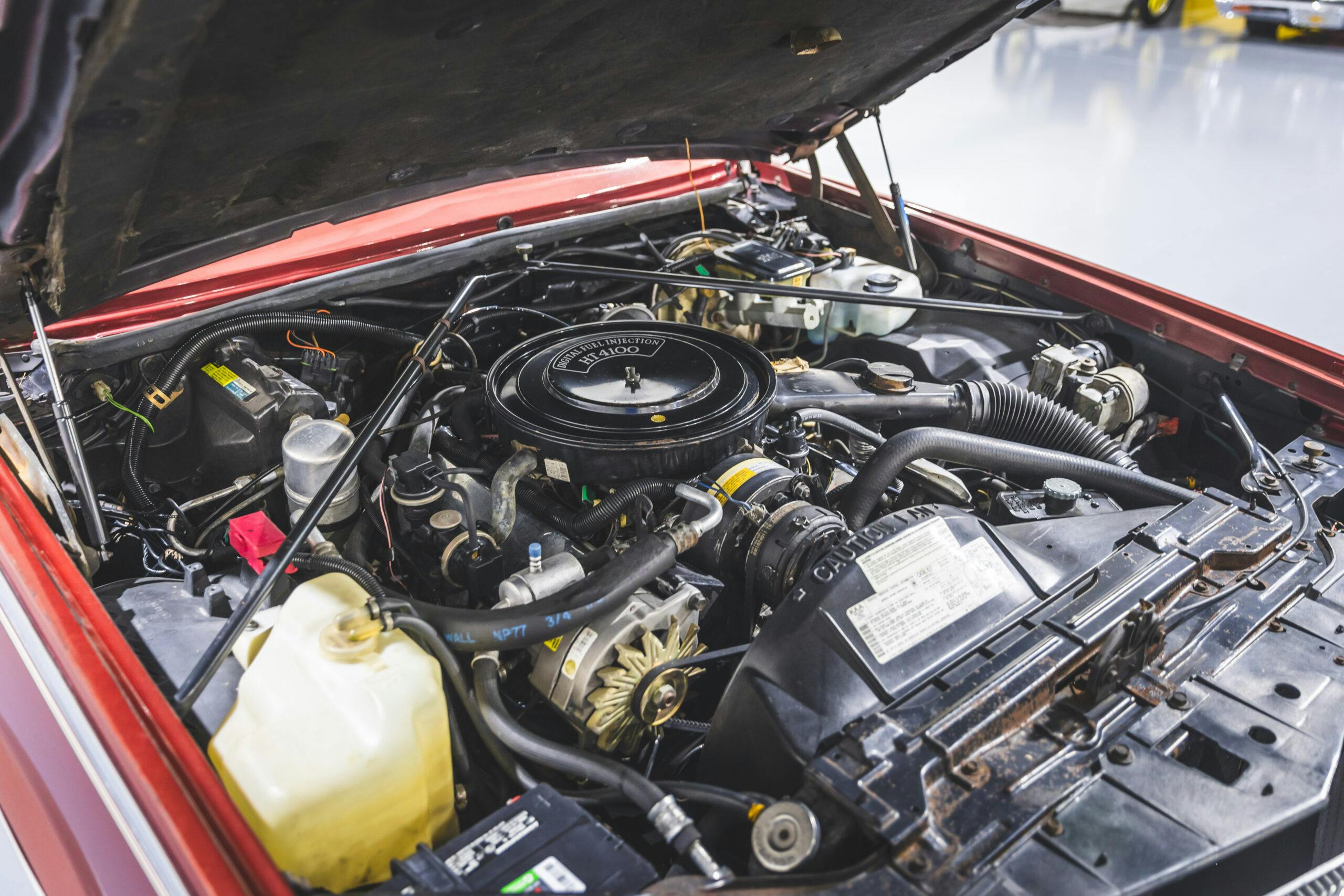


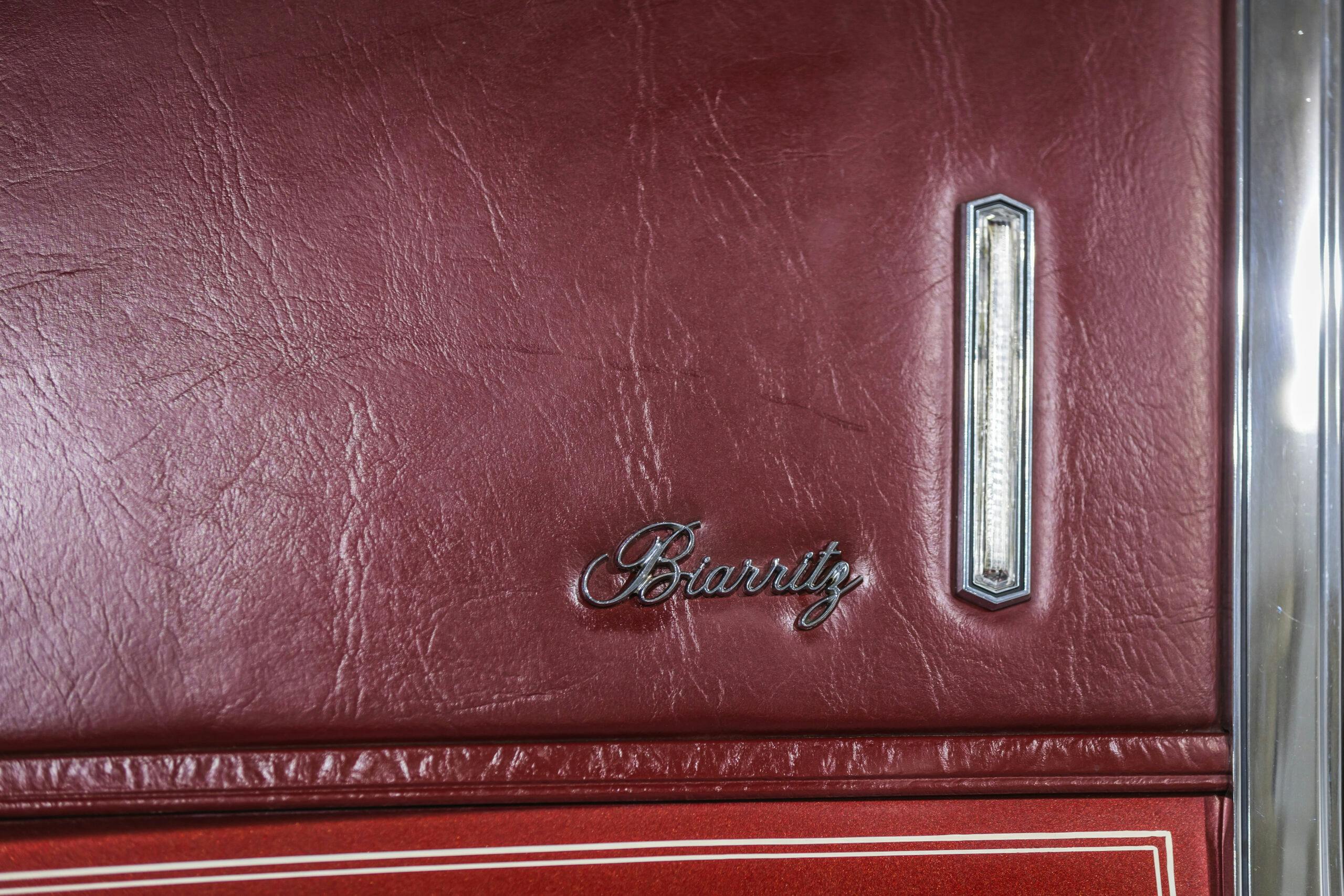
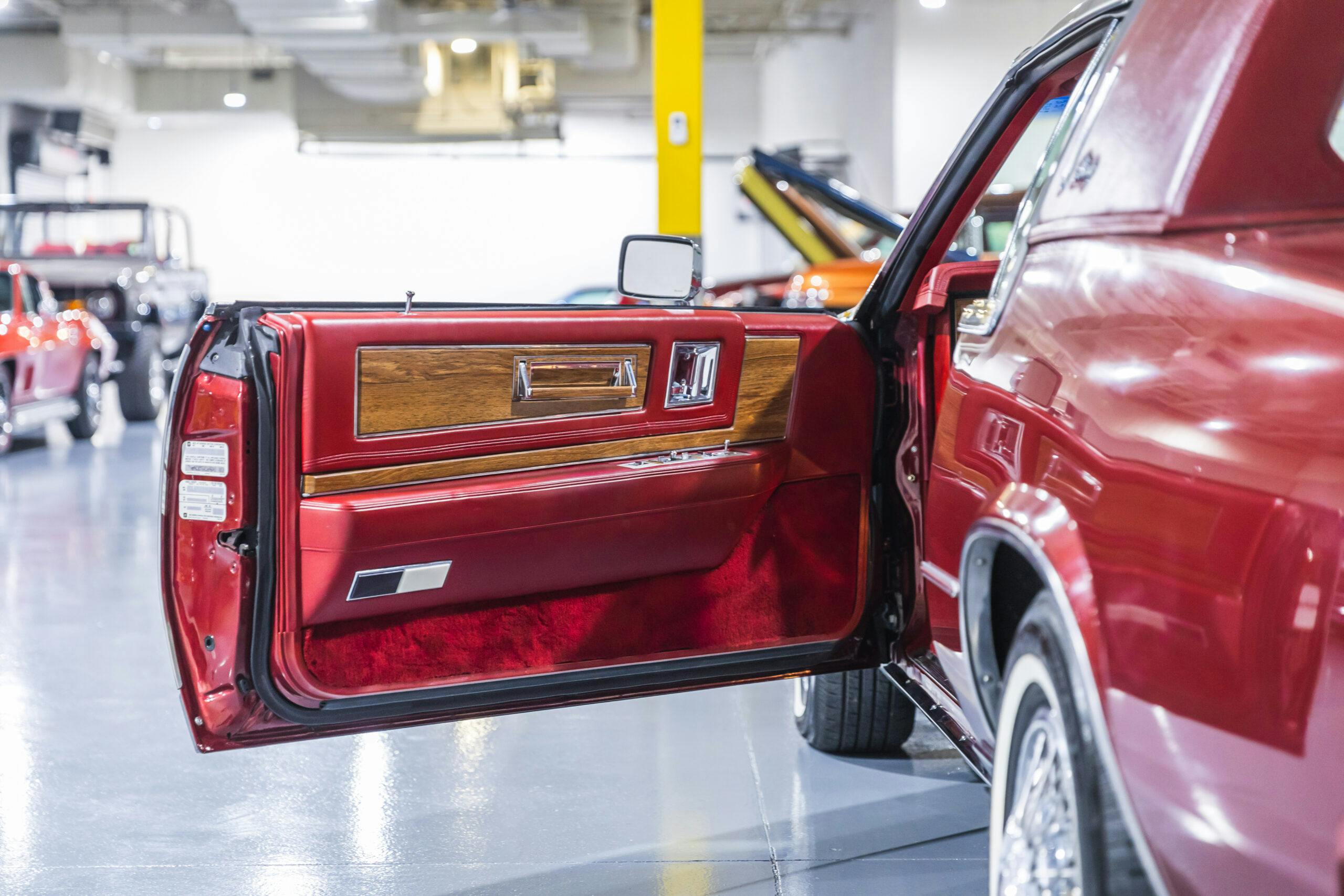
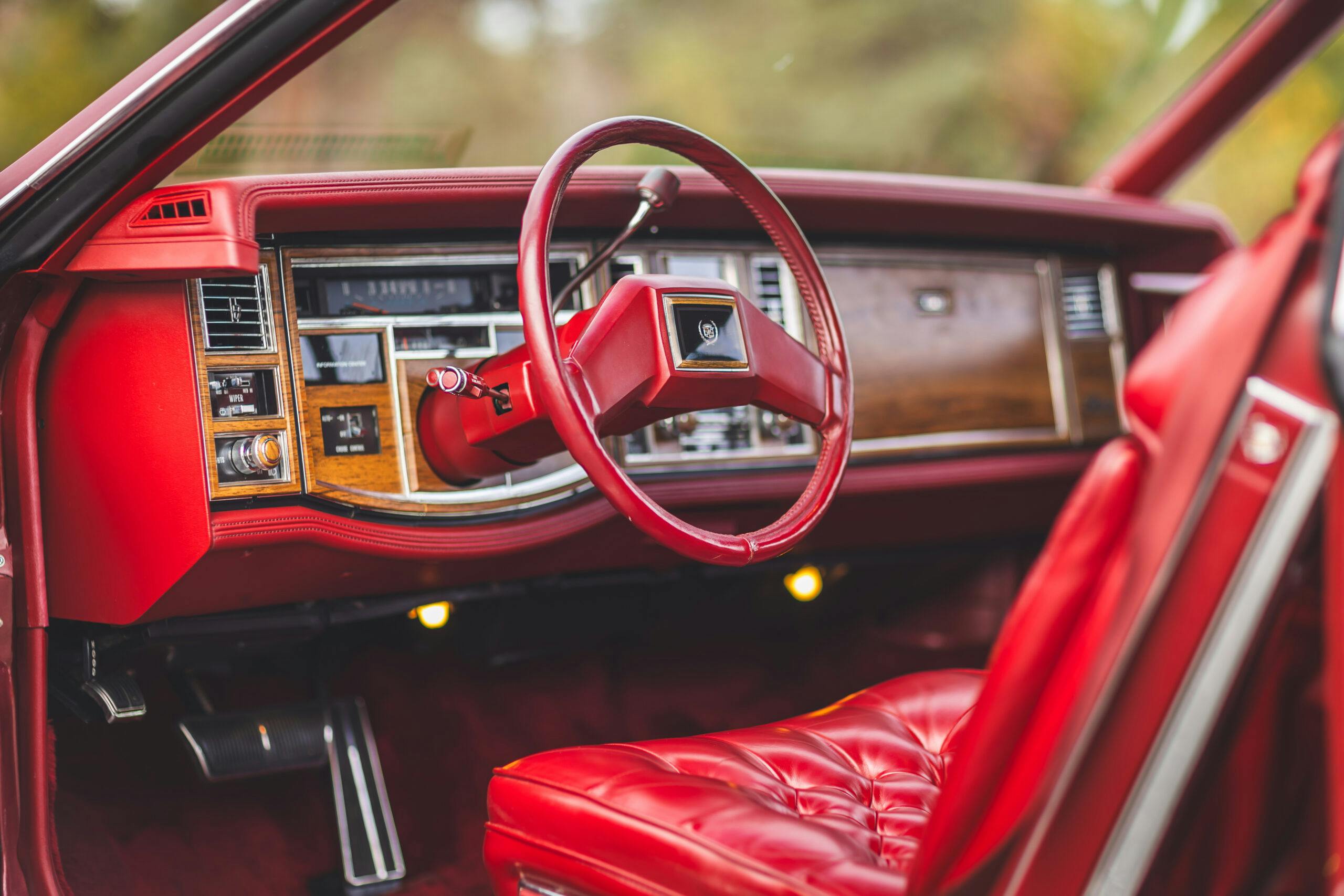
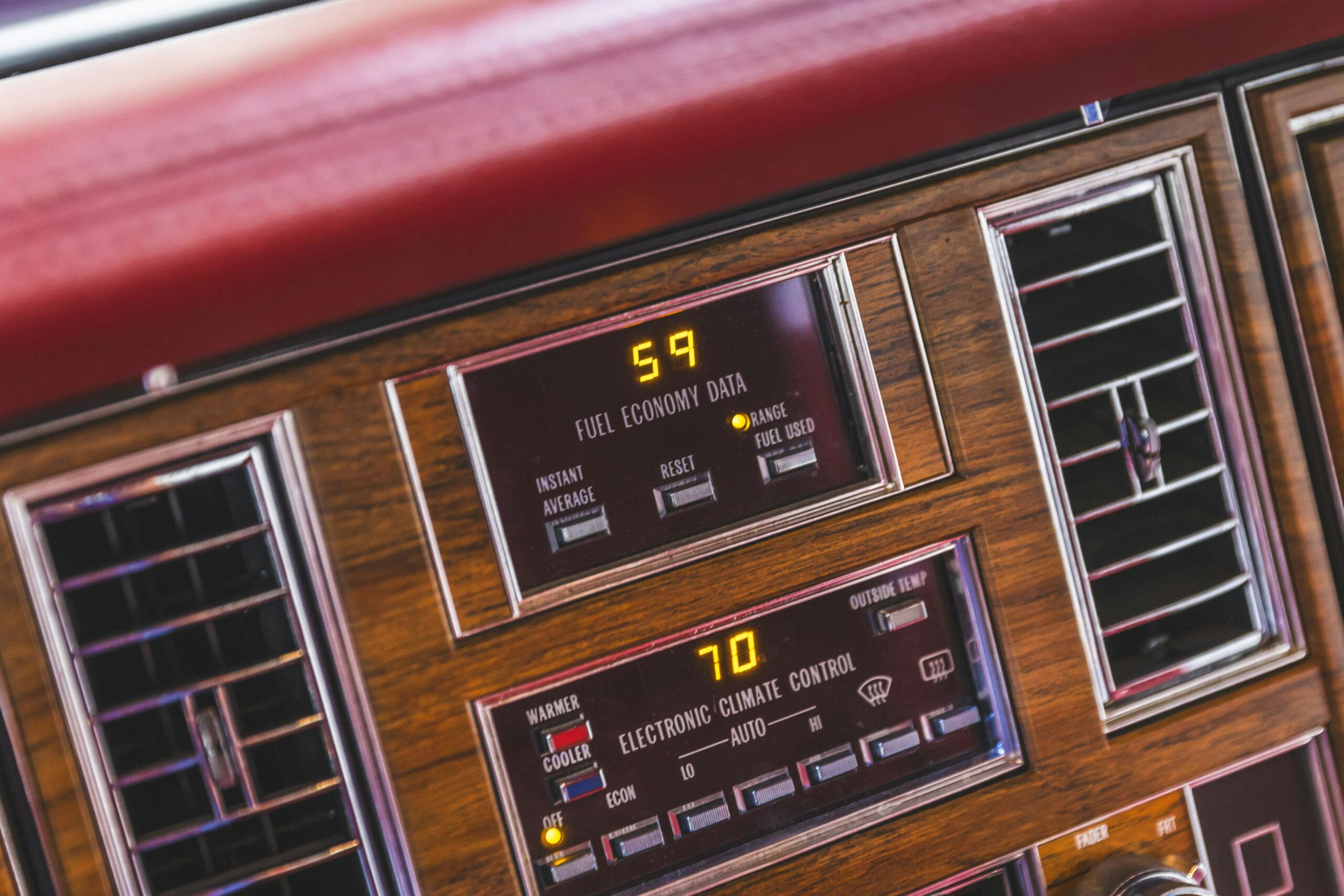
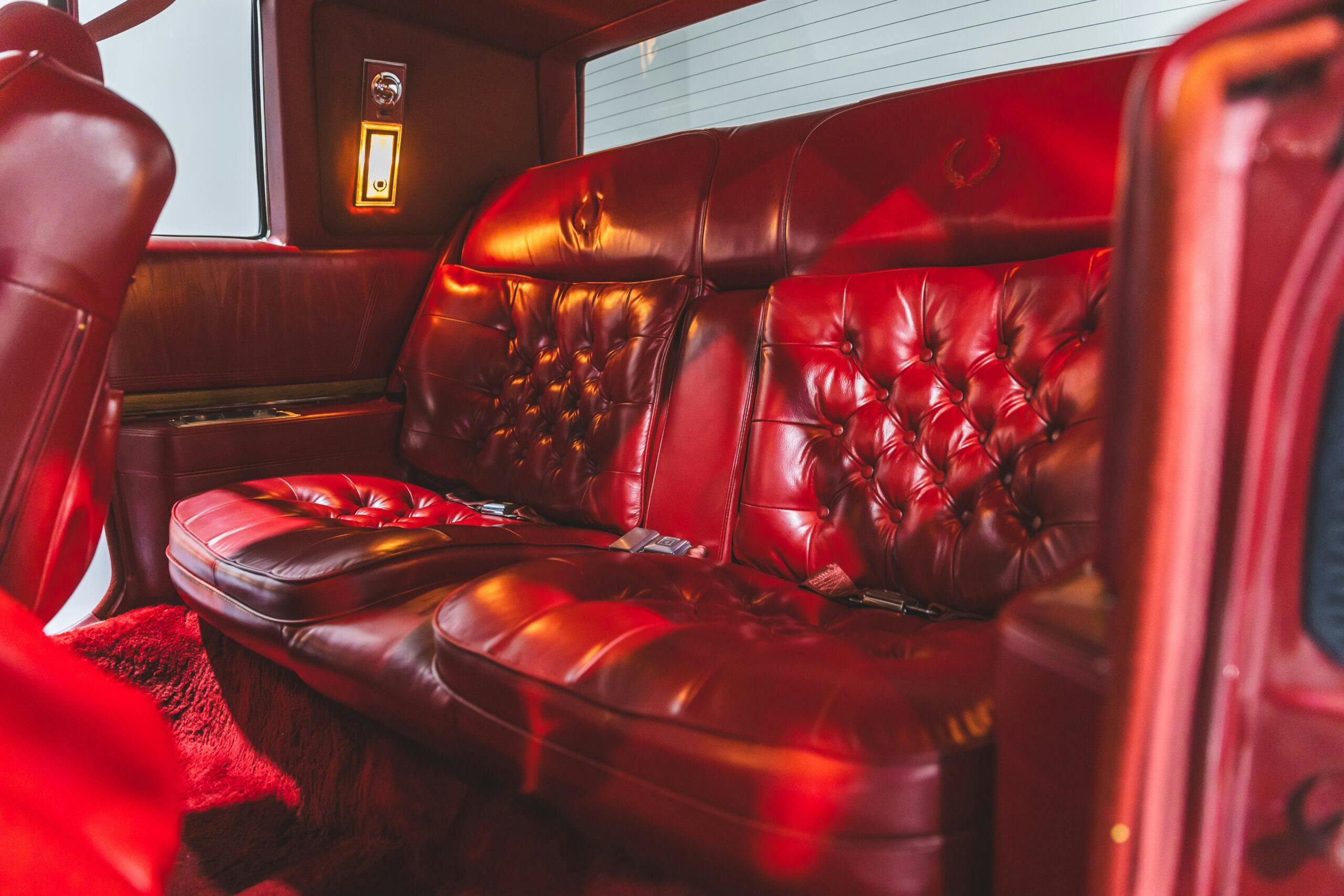


I owned an ’80 Biarritz, White on white. Beautiful to look at and ultra comfortable. But the 4/6/8 motor could have been one of the worst engines ever made. Unreliable and the biggest gas pig I’ve ever owned in my life (and I owned a Z06 with the 7.0L ).
Yea, I heard nothing but bad news about the 4-6-8 caddy engine. I read that it jerked alot and ran like crap. It was one of the first computer controlled engines and gm was still working the bugs out of it when they brought the car to market. Bad news!!
As maligned as that engine was, all you had to do is unplug the actuators under the valve covers to restore it to a standard V8
The big-block Caddy 368, 425, 472 and 500 were all the same basic design that debuted in 67, mainly just different displacements. The V8-6-4 368 was one of those and was very durable if you disconnected the underpowered computer.
Unplugging the 4-6-8 made for V8-only running; a simple fix & good thing. But… the later HT4100 is a nightmare that should be avoided at all costs. It cannot be upgraded, there’s no engine swap that fits, mechanics refuse to touch it, and it’s only a matter of time before the head gaskets blow (again & again). The later 4.5 & 4.9 is so much better but cannot be swapped in. Gorgeous car, but poorly engineered nightmare engine (!!). Don’t even think about it… run.
I owned a 1983 Eldorado coupe in red on red. It was a beautiful car! But….the HT4100 engine was truly a nightmare. I sold it before the warranty ran out.
As a bit of nostalgia worthy of comment. However these were bad cars. The Olds 350 diesel was one of the worst engines to come out of Detroit. The Cadillac V8-6-4 was significantly better but only because ( if memory serves me right ) that feature could be turned off by the dealers so it would stay running permanently on eight. Those engines had a tendency to hunt and peck between how many cylinders and couldn’t decide. Lincoln- Ford had tried the same thing earlier but couldn’t get it to work so they never offered it. So, speaking of which, for the same $’s you can get a 69- 71 Lincoln Mark III. A much more elegant car in the land yacht category and preferable to the tacky disco era Mark IV and others. That black Mark III in ‘The French Connection ‘ is a handsome piece and chase scene rivals, or is better than, the one in ‘Bullit’.
Sorry Paul, but it wasn’t black, but a rich chocolate brown, and it was never in a chase scene.
The Lincoln Mark III is so much better; far superior car.
Not in comparison to the 69-70 Eldorado, which is a better handling car, those Mark IIIs were like steering a big square box around
I just love the tacky porno disco music cars of the 70’s. Especially the Pucci car Lincoln Mark 5.
I got involved in resurrecting a Seville that is fairly similar drivetrain wise. One thing I discovered was that (a) the 4.1 V6 was only made for 4 years, and pretty much only for those cars and are pretty much unobtainable, (b) the 3.8 (Buick) V6 is identical in every aspect but displacement, and that is what ended up in this car, and (c) there is is enough room for the 77-79 425 V8, which would have ended up in the car if it was mine. When you see these things at car shows, there are very few that have the original engines in them
My in- laws had a brand new 1983 Cadillac Eldorado with the new engine ! It was a present from my mother- in – law to her husband for their 50 anniversary ! A month after getting the car the engine failed, and had to be replaced . He turned the Eldorado in for a 1986 Sedan DeVille .
“Whoever it was, they put the dynamite under the passenger’s side. But what they didn’t know, what nobody outside the factory knew, was that that model car was made with a metal plate under the driver’s seat. It’s the only thing that saved my life.”
Good enough for Sam “Ace” Rothstein, good enough for me!
Beautiful article
Audio – I stand corrected sir. I was however speaking about the chase scene ( Hackman was in a …Pontiac ,? ) chasing the train beneath the El, to clarify.
My folks had an ’84 that was identical to the feature car here. Took my drivers license test in it and we took it on many road trips to see my Grandpa in Arizona. Funny trivia is that the digital speedo would flash “85” repeatedly whenever you gave it the beans on a long straight on I-10 trying to imitate Doc Brown’s Delorean. Nostalgia aside, the 4.1L engine doomed this car. It stalled all the time, it was gutless, and had all sorts of mechanical and electrical demons. Got my Dad off Caddies for good and he was a Lincoln man from there on until he surprisingly decided he was a Vette guy. If I had another one just to scratch the itch I’d get a ’79 or figure out how to LS swap the 4-6-8 or HT4100. Thanks for a trip down memory lane.
My dad started to drive Caddy’s starting in 1960. So I grew up with Cadillac’s. In 1979 my dad traded in his 75 Caddy and purchased a new Eldorado. It had the Old’s 350 which was way better than the 4.1 HT V8 that came later. It was way smaller then the previous Eldorado and I thought there is no way this thing will feel like a Cadillac. I don’t know how Cadillac did it but it was even better and turned out be my favorite Caddy my dad ever got. My only gripe was it didn’t have a Cadillac built engine. Cheers!!!
I own 4 1985 Eldorado’s with 4100 engines. 2 convertibles and 2 coupes. one has been my daily driver for over 8 years. They are very nice Cadillacs to drive and constantly receive thumbs up. They will give 24 MPG highway when maintained. the secret is to follow manufacturers maintenance instructions. When you ask the relative or the man next door who used to be a crack mechanic on flatheads to “tune her up” that’s when your heartaches begin. AND don’t forget to use the cooling system pellets!
I inherited a 1985 Eldorado with 7500 miles (hundred not thousand). The condition is the same as when it left the showroom in 1985. Interested in selling this beauty.
Lucky you!!!
This generation of Cadillac has me completely tuned out. I never thought much of these cars, even as a kid.
Had an ’83 Diesel. Black vinyl over black with red interior. This was the 2nd generation Olds diesel that had most of the bugs worked out by then. Bought it as a repo with about 12k on the clock, drove it for 3 years. Mid teens around town, mid to high 20’s mpg on the highway. 10W-30 Rotella every 4,000 mi. Loved the car, a little shourt on the power though.
My only relationship with these cars was in junkyards – I’ve never ridden in one that was still road-worthy. The rear disc calipers were (and still are) used in dozens of aftermarket rear disc conversions even though the parking brake design is poor. I shipped and sold a lot of calipers back in the day.
My parents had a ’79 Coupe de’Ville that I thourouly enjoyed in my late teens/early twenties, but the Eldorado and especially the Biarritz version was what I truly lusted after. Always wanted one and still do. My CTS-V obviously is everything that this Eldorado is not, but I wouldn’t mind owning one of these just to cruise to cruise around in and re-live my “Yoot”.